How'd You Like Them Apples? A History of the Sour Apple Award
The Hollywood Women’s Press Club was founded by Louella Parsons in 1928 to organize the women covering Hollywood’s happenings to create social opportunities and “promote pleasure and recreation” per its founding statement. They would meet initially at the Brown Derby on Vine Street, but by 1940, the Club was bigger and boasted the most influential women’s reporters covering the Hollywood beat, among them Dorothy Manners, Katherine Albert, Ruth Biery and Regina Carewe.
In 1940, the Club decided to hand out press awards, the Golden Apple and the Sour Apple awards, to the most cooperative and the least cooperative stars each year. If you were lucky enough to be the friendliest to the Hollywood Women’s Press Club that year, you might win a golden apple-shaped lapel pin for women and an apple-shaped script-holder for men.
The Club hosted a party each year, and the Golden Apple winners, naturally, couldn’t resist showing up to claim their prizes in person. Gregory Peck won twice in the ‘40s (1945 and 1947) and told Kay Proctor, the President of the Hollywood Women’s Press Club at the time, “Wild horses couldn’t have dragged me away from that party.”
No Sour Apple winners ever showed up, though the rumour mill churned that Greer Garson, who won in 1945, had considered it for a brief moment. They didn't even get a token for their troubles (or the troubles they caused), the win was symbolic.
Thank Walter Pidgeon for the name ‘Sour Apple.’ After he’d been designated the sour apple actor of 1944, he confronted Proctor at a party at Lana Turner’s house and asked, “How come you gals dished me that Bad Apple at Christmas? You all know I don’t beat horses, and I always say ‘Women and children first!’ for lifeboats.”
Once he’d been told how uncooperative he’d been, he made a conscious effort to change and never ran afoul of the Hollywood Women’s Press Club again.
In March 1947, Kay Proctor, then-President of the Hollywood Women’s Press Club, wrote an article for Photoplay called “The Rap”, outlining the process. The Sour Apple, she wrote, was borne out of the need to recognize “those who had made our job more difficult.”
In the first year it was awarded—in 1941, to Ginger Roger and Fred Astaire—Ginger said, “I have nothing to say, except that I seem to be listed among some nice people.” Fred, meanwhile, said, “They should have respect for my age.” Jean Arthur, who won the next year, never mentioned it at all, in her characteristic Jean Arthur way.
Bing Crosby was a perennial nominee, though, it must be noted, he never actually won, but that didn’t stop Proctor from calling out his attitude (or incorrectly stating that he’d won): “We’re forced to admit that no amount of spanking (he won once and has been nominated three times as uncooperative) does any good. But at least the guy is consistent! And, damn it, so all-fired charming when he wants to be.”
Sheilah Graham noted that Olivia de Havilland’s Sour Apple win in 1950 was part of an overall image problem in a column for Photoplay called “Big Headaches” in April 1951.
Graham wrote that Liv “is accused by the Hollywoodites who used to be her friends in pre-Oscar winning days, of behaving like an obedient Victorian daughter” under the thumb of her then-husband, and that “it is such a pity that Olivia is no longer the happy-go-friendly girl who used to drop in on her friends with chocolate cake...”
Humphrey Bogart also won, in 1950, and when asked why he’d been cited, a club member told Graham “because he’s so unpredictable. You never know when he is going to raise a fuss. His tantrums have nothing to do with fact, they depend on his mood.”
But it begs the question, who gets to be ‘uncooperative’? Who, in Hollywood, particularly those under the control of the studio system, gets to decide the terms upon which they’ll talk to the press?
If you look back at some of the Sour Apples and examine what was happening in their lives at the time, you can glean some idea as to why they’d be more than a little reticent to talk to the press.
In 1960, at the height of the Liz-Eddie-Debbie scandal, Debbie Reynolds was deemed the Sour Apple of the year.
Debbie, who was constantly in the press at the time, standing on her front door steps with a diaper pin attached to her shirt to show the world that she was the doting young mother at home scorned by Eddie Fisher and Liz’s va-va-voom persona. She’d previously won the Golden Apple in 1954 as her career took off and was constantly courting publicity throughout the rest of the decade.
In 1954, Doris Day was going through a medical crisis (panic attacks and shortness of breath) and became reclusive as she tried to deal with her stress. This, as Calamity Jane was hitting the screen. As soon as she was well, she began doing interviews again, for all the good it did her. She never did win the Golden Apple in all the years she acted, but she was the biggest star at the box office four years of her career, a record that's been tied but never broken.
In 1945, Jennifer Jones’s marriage to Robert Walker broke up and her affair with David O. Selznick was widely known. Rita Hayworth’s marital problems were dominating the news when she won her Sour Apples in 1948 and 1952.
But the opposite is true, too. For every Sour Apple awarded, there was a Golden Apple presented to the most cooperative actor, and sometimes it wasn’t just because you were chatty and willing to talk to the press like Bob Hope, Tony Curtis, Joan Crawford and Bette Davis, all frequent winners, were.
In 1949, Kirk Douglas won the Golden Apple but he did it so that he could play the game and garner an Oscar nomination out of it. He did end up with his first nomination, for Champion, that year, but as two members of the Hollywood Women’s Press Club revealed to the gossip columnists the very next year, as soon as the Oscars were over and it didn’t benefit him to play ball any longer, he was in contention for the Sour Apple award. (There's also a good bit of gossip in another column about how Kirk was getting too high on his own supply, which I reveled in because I loathe the guy, but that's a post for another day...)
And here’s the thing: being named the Sour Apple of the year seemed to rankle the winners in such a way that they—for the most part—had no choice but to run to the press to complain about their new laurel.
Esther Williams won the Sour Apple twice in the early ‘50s and ran to Louella Parsons—of all people—to voice her complaints. She was quoted in a 1951 issue of Photoplay saying that her first win, in 1951, likely happened because her baby son became ill and she frequently had to cancel interviews and photo shoots to take care of him.
“I remember one particular time; I was half out the door on my way to the studio when he started vomiting violently. Do you think I would have left him for one moment until the doctor got here and said he was all right? Never! I wouldn’t leave a sick baby of mine, Louella, for the best publicity break in the world—I just couldn’t!”
But here’s the thing about Esther: I’ve read every issue of Photoplay from the ‘40s and ‘50s (thanks Internet Archive!) and she’s on just about as many covers as she’s not, and when she’s not, she’s likely got an article inside, or she’s mentioned in the gossip section, or there’s a plug for her restaurant, Trails, which she owned with her then-husband Ben Gage.
After her first win, Cal York—who wrote that Esther was always nice to him—was curious as to how this press-hungry aqua-star had been the year’s biggest sour apple. He asked around for his March 1952 column—or more salaciously, asked why they’d “given the mermaid the bird”—and here was what he found out:
• “It wasn’t that Esther didn’t do things, it was the way she did them. she kept cameramen waiting for hours, then gave them the rush act.”
• “Yes, Esther posed after breaking dates, changing plans and upsetting everyone.”
• “Esther tried to tell us how to do our job instead of doing her own.”
• “Esther was always trying to promote things for free.”
The next month, Mike Connolly, who also couldn’t figure out why the million dollar mermaid had been deemed sour, interviewed Esther for his ‘Impertinent Interview’ column. Sitting in the MGM commissary, she retorted, “I honestly don’t know why they named me. I don’t know anybody who works harder to please interviewers and photographers.
“You know what? I think I’ll bundle up all the interviews and photos I’ve done this year and send them to the girls. Maybe when they see them in one lump like that they’ll realize how hard I’ve worked and feel a little kindlier toward me."
Connolly counted 24 interviews and articles, 25 photo shoots and 13 magazine covers in the year she’d been named Sour Apple and then went to members of the Hollywood Women’s Press Club for answers, too:
• “Esther is cooperative, all right, but only with big columnists and name magazine writers—not with the everyday working press. She dictates what she wants in print about herself!”
• “Esther always is a half- hour to two hours late for an interview. At a sitting she says to the photographer, ‘Hurry up, now, I have to meet Ben at The Trails in an hour.’ Now I ask you, what kind of portraits can you get in fifteen minutes? But don’t take my word for it. Ask the boys how impossible she can be.”
A photographer who worked with Esther then told Connolly that they all hoped Esther’s win would turn around her attitude. “They hope she’ll be big enough to correct her mistakes of the past. Why, I can remember a time when Esther would have stood on her head to get her picture published. And you wanna know something—as big a star as she is, she still needs to have her picture in the paper because the public likes to see it there! The final verdict always rests with them.”
Shirley Temple—the little girl who cheered up the world in the ‘30s—was also cited as among the most uncooperative actresses in 1948, though it must be noted that she didn’t win, Hedy Lamarr did.
But she still ran to Louella Parsons to clear the air in a December article for Photoplay called “What Happened to the Temple Marriage?” that outlined all the reasons why she’d not been around for the press.
“Well, my career has been disappointing. I want to play something beside silly teenagers, yet that is all the stories the studios have been giving me. I was voted among the least cooperative actresses by the Hollywood Women’s Press Club. I went to talk with them and explained how I worked Sundays and every other day, and I did want to spend a little time with my baby…The most difficult thing of all, this past year, of course, has been our trouble with our marriage.”
Cal York tried to placate Shirley Temple earlier in the year, clearly to no avail. In March, he wrote that the young actress was crushed to have been nominated, but that “she is so carefully guarded by her studio that we have no doubt there were many times she did not even know writers were trying to reach her.”
In fact, Shirley was more bothered about her nomination than the actual winners! Cal continued on that Errol Flynn, who won the Sour Apple, “doesn’t give a hoot” and that “the warm letter Cal just received from Errol, sailing in the Bahamas, doesn’t render him uncooperative to us.”
Sometimes stars made turnarounds. One year they’d win or be nominated for the Sour Apple and soon enough, they’d become friendlier. In 1943, at the height of her fame, Joan Fontaine added the Sour Apple Award to her mantle. She reflected in a 1951 Photoplay article about 'the star secrets of Hollywood glamour' that the win came down to shyness and an inability (or unwillingness) to talk about her early years.
“When I came to Hollywood, I found it so difficult to answer questions about my personal life that the Hollywood Women’s Press Club gave me the lemon one year for being the most uncooperative actress,” she recalled, and can I just say that I love how she didn’t even remember which fruit the award was named after?
But it was also a blessing in disguise for her: “This really started me making myself over. Not everyone is born with an extrovert personality, or even a personality that attracts. I knew I had to cultivate confidence in the people with whom I came into contact. I discovered that the secret of making people like you is to like people. When a girl is popular, it only means she does not go around feeling mistrustful of people.”
In 1947, she was named the Golden Apple, and though she couldn’t attend the ceremony (Loretta Young collected the prize in her stead), she passed along a message to Proctor: “I know now that I undoubtedly deserved The Rap when you gave it to me. I was an unhappy, mixed-up girl about that time, although I don’t offer that as an alibi. Now I’m completely happy and not at all mixed up, and I hope I deserve The Apple as much as I earned The Rap.”
Frank Sinatra, who won the Sour Apple a few times in his career, told Louella Parsons in a May 1947 article for Photoplay that his first win hurt his feelings. “I was hurt—really hurt. That was something I never wanted to happen. Maybe it was good for me though. It’s made me stop and think. Not everybody can be out of step but me.”
Robert Mitchum, too, who’s long carried the reputation that he could be a difficult star, won the Sour Apple in 1950 and changed his tune enough that the gossip columns were writing the next year that “after a later luncheon with the gals [of the Hollywood Women’s Press Club], they said their faces matched their lipsticks.”
- 1941 – Ginger Rogers and Fred Astaire
- 1942 – Jean Arthur and George Saunders
- 1943 – Joan Fontaine and Errol Flynn
- 1944 – Sonja Henie and Walter Pidgeon
- 1945 – Fred MacMurray and Greer Garson
- 1946 – Ingrid Bergman and Frank Sinatra
- 1947 – Jennifer Jones and Gary Cooper
- 1948 – Rita Hayworth and Errol Flynn
- 1949 – Hedy Lamar and Humphrey Bogart
- 1950 – Olivia de Havilland and Robert Mitchum
- 1951 – Esther Williams and Frank Sinatra
- 1952 – Rita Hayworth and Mario Lanza
- 1953 – Esther Williams and Dale Robertson
- 1954 – Doris Day and Edmund Purdom
- 1960 – Debbie Reynolds and Elvis Presley
- 1961 – Natalie Wood and Marlon Brando
- 1962 – Doris Day and Warren Beatty
- 1963 – Ann-Margret and James Franciscus
- 1964 – Doris Day and Tony Curtis
- 1965 – Ann-Margret and Vince Edwards
- 1966 – Natalie Wood and Elvis Presley
- 1970 – Jane Fonda and Danny Thomas
- 1973 – Norman Mailer
- 1974 – Frank Sinatra
- 1941 – Bob Hope and Bette Davis
- 1942 – Cary Grant and Rosalind Russell
- 1943 – Bob Hope and Ann Sheridan
- 1944 – Alan Ladd and Betty Hutton
- 1945 – Gregory Peck and Joan Crawford
- 1946 – Dana Andrews and Joan Crawford
- 1947 – Gregory Peck and Joan Fontaine
- 1948 – Glenn Ford and Dorothy Lamour
- 1949 – Kirk Douglas and June Haver
- 1950 – Alan Ladd and Loretta Young
- 1951 – John Derek, William Holden and Anne Baxter
- 1952 – Tony Curtis and Janet Leigh
- 1953 – Roy Rogers and Dale Evans
- 1954 – Dean Martin and Jerry Lewis and Debbie Reynolds
- 1955 – William Holden and Jane Russell
- 1956 – Charlton Heston and Deborah Kerr
- 1957 – Glenn Ford and Kim Novak
- 1958 – Tony Curtis and Dinah Shore
- 1959 – David Niven and Shirley MacLaine
- 1960 – Jack Lemmon and Janet Leigh, Nanette Fabray
- 1961 – Barbara Stanwyck
- 1962 – Richard Chamberlain and Connie Stevens
- 1963 – Dick van Dyke and Bette Davis
- 1964 – Lorne Greene and Donna Reed
- 1965 – John Wayne and Dorothy Malone
- 1966 – Bill Cosby and Phyllis Diller
- 1967 – Sidney Poitier and Carol Channing
- 1968 – Fred Astaire and Barbra Streisand
- 1969 – Gregory Peck and Mae West
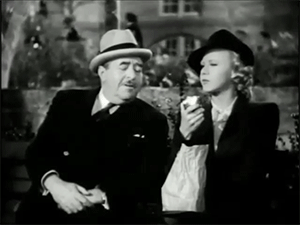
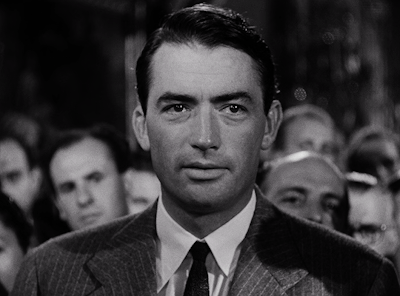
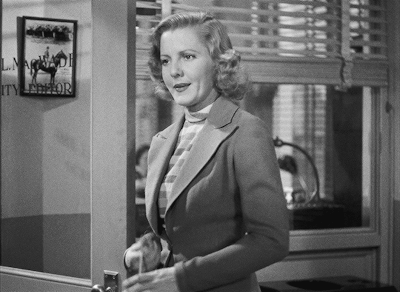
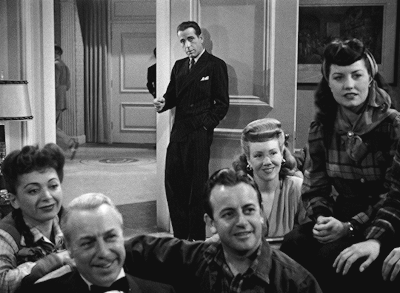
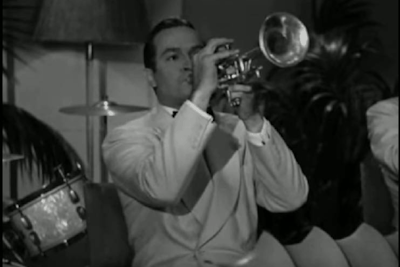
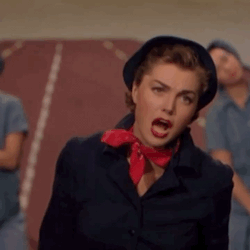

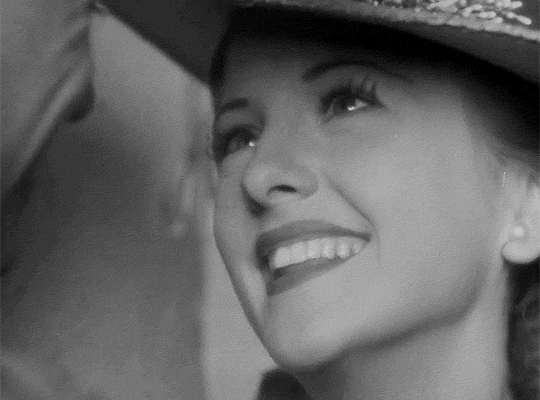
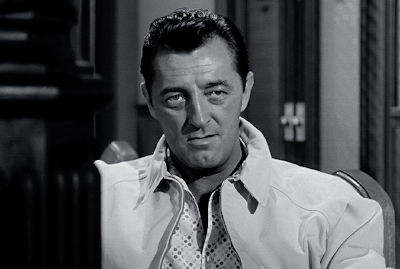
Comments
Post a Comment